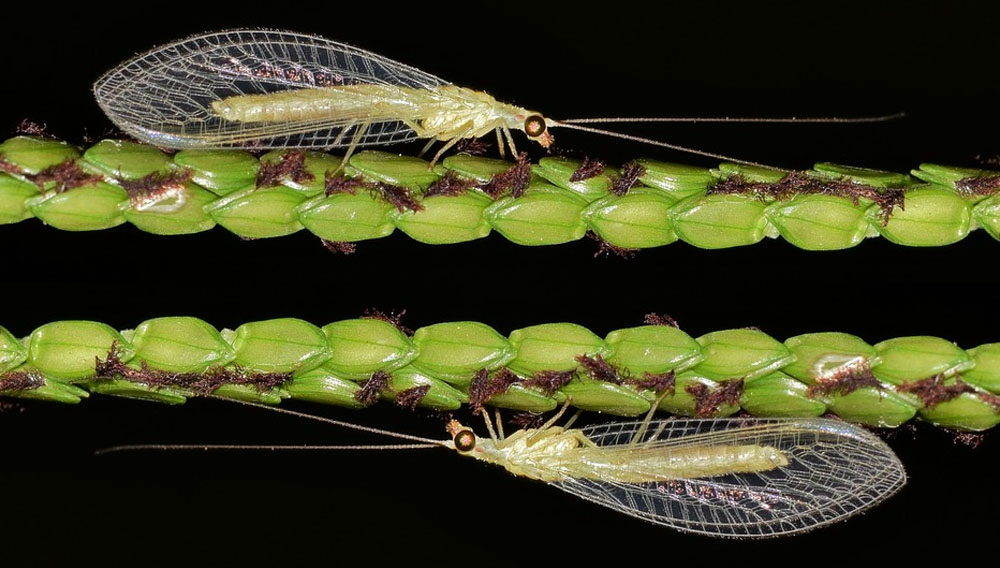Few growers know what a green lacewing is, and very few about its function – currently, it’s getting notorious among marijuana growers thanks to the use in organic farming.
So far, many growers decided to control the pests thru chemical products (very useful, but scarcely environmentally-friendly) – currently, more and more responsible growers prefer to use 100% ecological products, so the green lacewing gets into the game.
What’s the green lacewing?
Chrysopidae is a family of flying insects, usually living in zones with abundant vegetation, and their main food source are other insects. When the lacewing’s a larva, it’s fed by all kinds of soft-bodied arthropods, even from its very species; when adult, it’s specially fed by pollen and protein releases, so the most interesting growing moment is its larva stage (voraciously fed by all kinds of insects).

green chrysopas
Why is the green lacewing beneficial for grows?
The green lacewing’s mainly fed by other insects which are fed by our grow; the main food source of the green lacewing are cochineals, trips, larvae and all kinds of insect eggs – this characteristic has made the green lacewing a grower’s ally because it can have a determining function in pest control programs, 100% ecological.
With lacewings, pest control’s been effective against acids, lepidoptera larvae, aphids, mites, phytophagous hymenopterus...
How is it sold?
The lacewing’s sold as an egg or larva thru an inert medium, usually separated to avoid eating each other. When placing the larvae in the grow, they’ll start moving thru it, and will devour every fronting pest – during their 14-21 day larva stage, up to 200 weekly eaten insects (too much).
Once adult, they can be fed by fortified molasses to get them reproduced (more larvae).
How does the green lacewing perform?
This insect has very limited senses, so it can just detect its victims thru direct contact; usually, it detects the rest of insects thru touching, walking around the vegetation till it bumps into them and it impals them with its sharp jaws – when impaling, it injects some enzymes to dissolve it, so that it can be sucked with those jaws: this process could come straight from a horror/sci-fi flick, but it gets really useful to extinguish the pests of our grow with no harmful product.



Mark Warren
Two sets of green lacewings in my garden. I think the blue jays are eating them before the larvae hatch. Yes? Any tips other than a pellet gun?